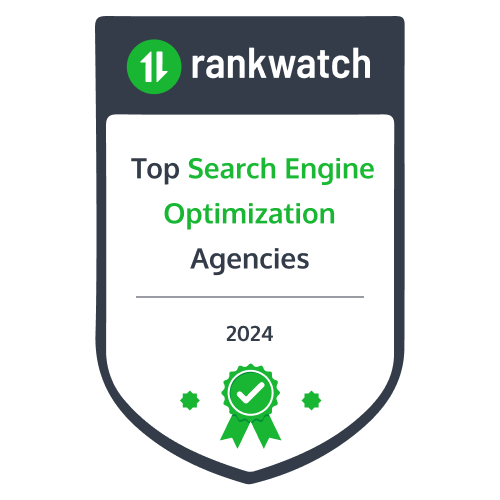When launching a marketing campaign, many businesses grapple with choosing the most effective strategy to increase traffic and generate leads. Two popular options are search engine optimization (SEO) and Google Ads, but it can be challenging to determine which one will yield the best results for your company. In this post, we’ll dive into the SEO versus Google Ads debate, offering insights to help you decide which tactic might be the better fit for your business needs. Let’s break down the differences and potential benefits of each approach.
Google Ads vs. Organic SEO: What is SEO
At its core, SEO encompasses a variety of strategies, including keyword research, on-page optimization, content creation, and link building. These elements work together to elevate your website’s visibility in search engine results. You might also consider working with an SEO firm to refine your approach and get better results.

A study from HubSpot provides some compelling figures: businesses drawing leads through SEO see a close rate soaring above 14%. Plus, a significant 61% of marketers are putting SEO at the top of their inbound marketing efforts. What does this tell us? Simply put, SEO is a cornerstone for enhancing your business’s visibility online.
Why Invest in SEO?
1. Boosts Website Traffic
Studies indicate that organic searches are responsible for 53% of web traffic. By enhancing your search engine ranking through SEO, you’re likely to attract more visitors.

2. Enhances User Experience
SEO isn’t just about pleasing algorithms; it’s equally about improving the user experience. A well-optimized site is user-friendly, quick to load, and rich in valuable content, making sure your visitors have a positive interaction with your site.
3. Increases Brand Trust and Visibility
Appearing at the top of the search results can significantly enhance your brand’s credibility and visibility. This perception makes your site a more appealing choice, potentially boosting conversions and sales.
4. Cost-Effective
Compared to paid advertising strategies like Google Ads, SEO can be a more economical solution in the long run. While it does require an initial investment, the maintenance costs are lower over time, especially as you begin to see sustained results.
5. Delivers Long-Term Value
SEO is a long-term marketing strategy. Unlike paid ads, which stop generating traffic once you cease payments, SEO keeps on giving, driving traffic and leads long after your initial investment.
As more businesses turn to the internet to boost their presence, digital advertising methods like Google Ads have become indispensable tools, offering vast reach and enhanced return on investment. While we’ve previously explored the nuances of SEO, let’s now dive into the world of Google Ads.
Google Ads vs. Organic SEO: What is Google Ads
Google Ads is an online advertising solution from Google that enables businesses to showcase their ads on Google’s search engine and across the Google Display Network. This platform is designed to connect businesses with potential customers who are searching for products or services they provide.
Google Ads attract 246 million unique visitors each month. On average, businesses receive a $2 return for every $1 invested in the platform, making it a highly effective option for boosting sales. Approximately 80% of internet users encounter ads via Google’s Display Network each day, and about 65% of small B2B companies successfully acquire customers through this method.
Why Invest in Google Ads?
1. Boosted Visibility
Google Ads can significantly enhance your online visibility. This platform helps you reach users who are actively searching for products or services like yours, increasing the likelihood of generating more leads and sales.
2. Optimized ROI
With Google Ads, you can set your advertising budget and only pay when someone clicks on your ad. This pay-per-click model allows you to monitor and optimize your return on investment by adjusting your ad spend based on performance.
3. Precise Targeting
The platform offers robust targeting options, including keywords, geographic location, language, and device type. This enables you to tailor your ads to the audience most likely to be interested in your offerings.
4. Trackable Metrics
Google Ads provides detailed analytics that help you track your ad performance. Metrics such as clicks, impressions, conversions, and more are available to help you gauge the success of your campaigns.
5. Synergy with SEO
Although SEO and Google Ads are distinct approaches, they complement each other well. While SEO enhances your visibility through organic search results, Google Ads allows you to target specific keywords that might be challenging to rank for organically. This dual approach can amplify your overall online presence and drive additional traffic to your website.
Integrating Google Ads into your digital marketing strategy can expand your reach and provide valuable insights into your target audience. This can help refine future campaigns and boost your business growth.
Google Ads vs. Organic SEO: Which One to Choose
SEO and Google Ads are two powerhouse strategies for boosting your online presence and drawing in the right crowd to your website. Here’s how they differ and how you can leverage each for your business.
SEO, or search engine optimization, is all about enhancing your website to climb higher in search engine results. This organic approach focuses on broadening your visibility and establishing your site as a trusted resource.
On the flip side, Google Ads operates as a robust advertising platform. It blends elements of PPC (pay-per-click) advertising with SEO tactics. By carefully selecting relevant keywords, you can craft targeted ads that reach the right people at the right time.
A well-rounded digital marketing strategy often includes both SEO and Google Ads. These tools complement each other and can significantly amplify your marketing efforts.
The key is to align these strategies with your overall business objectives. If your goal is to drive organic traffic and boost your site’s click-through rates and search rankings, SEO should be your go-to. However, if you’re focused on enhancing specific campaign conversions, managing costs per click, and engaging highly qualified leads, then PPC through Google Ads might serve you better.
The magic really happens when you integrate SEO with PPC and add other marketing methods like social media marketing (SMM) and content marketing. This holistic approach can transform your digital marketing efforts, leading to dynamic, comprehensive campaigns that deliver stellar results.
Conclusion
When it comes down to it, a well-rounded online advertising strategy includes both SEO and Google Ads. SEO, primarily a free method, drives organic traffic by improving your rankings in search engine results.
On the other hand, Google Ads, Google’s own pay-per-click and paid search platform, allows you to create campaigns that appear across Google’s display network, attracting paid traffic that’s relevant to your offerings.
Balancing these two approaches effectively is key to achieving digital marketing success.




